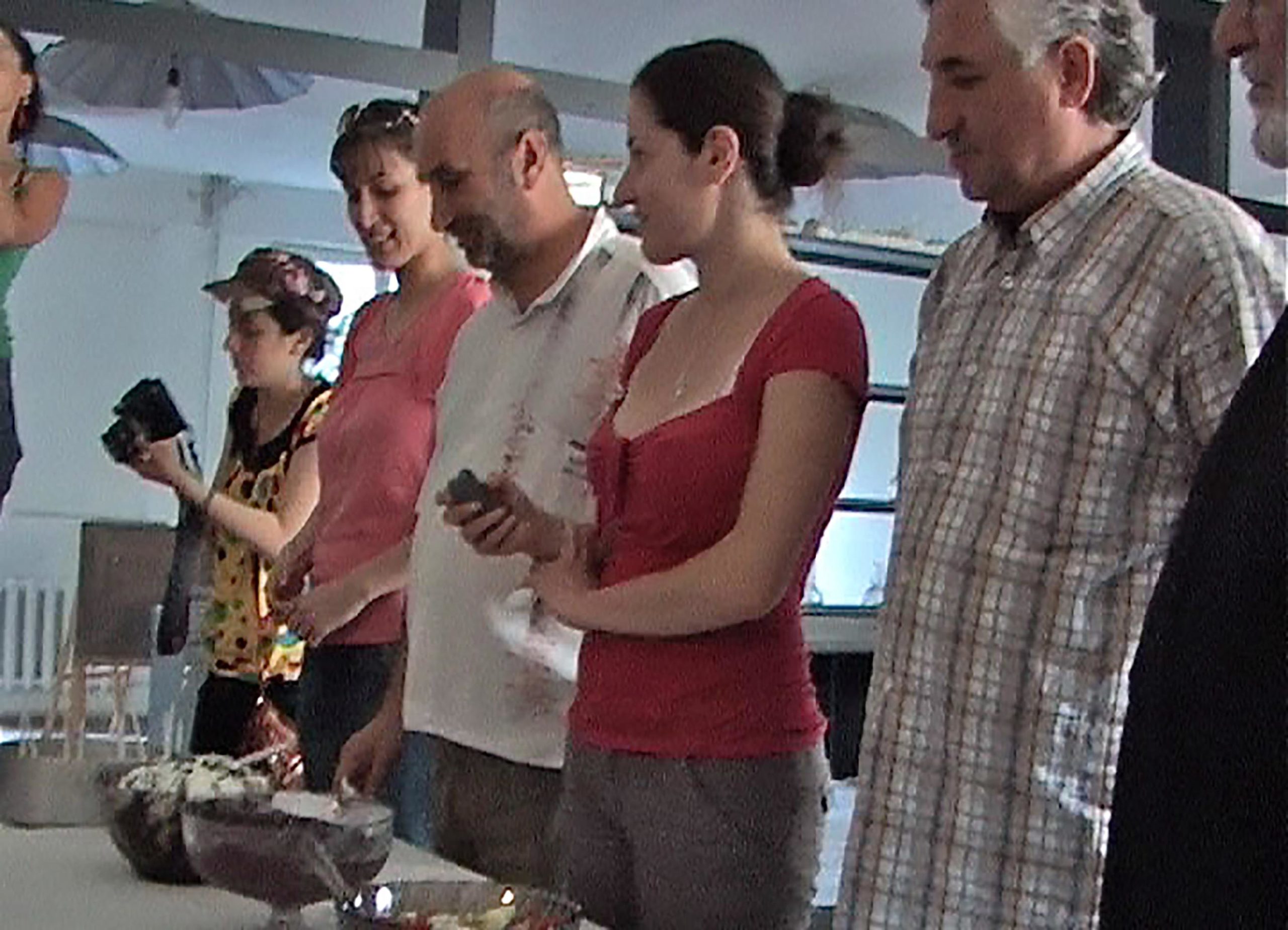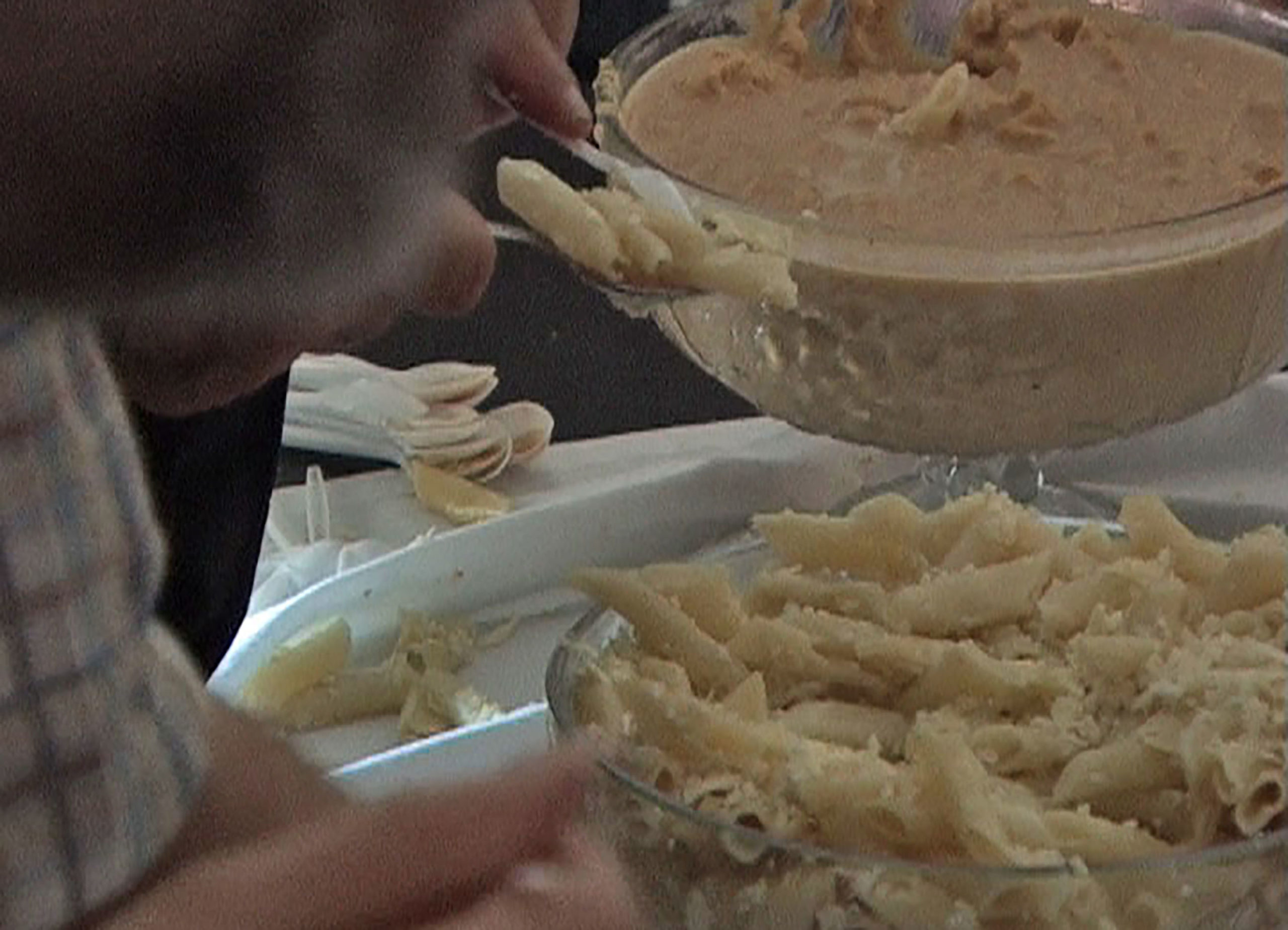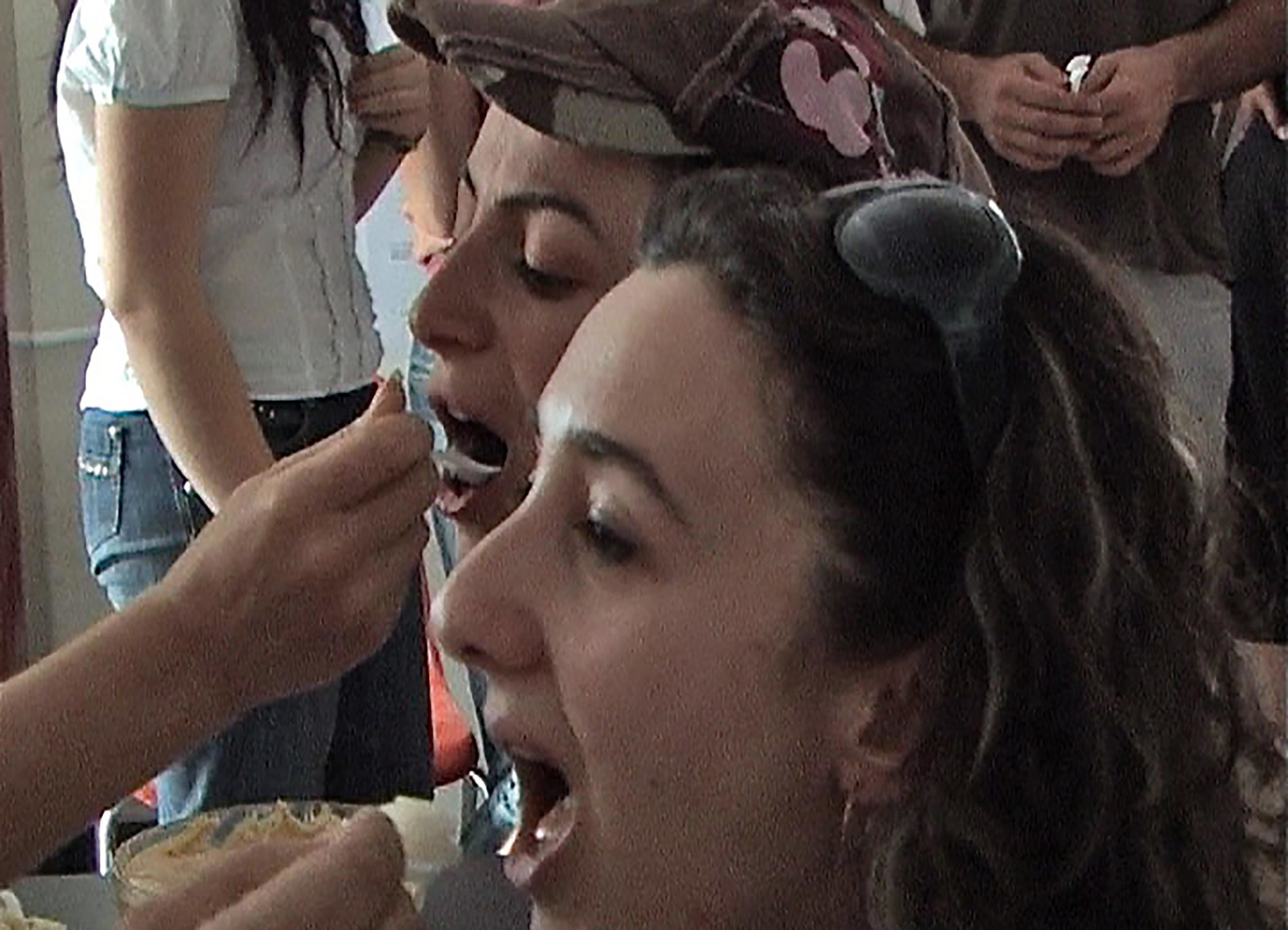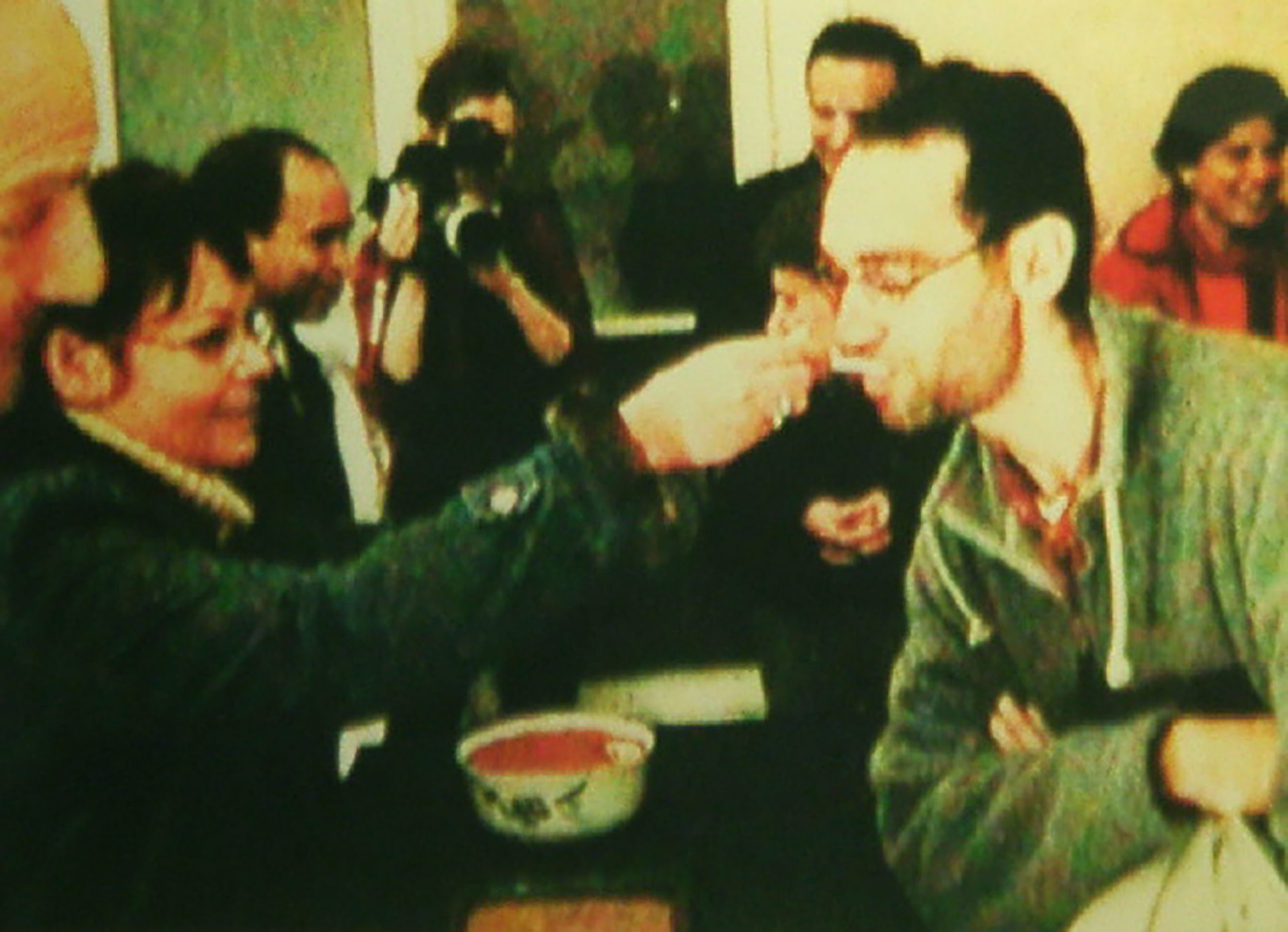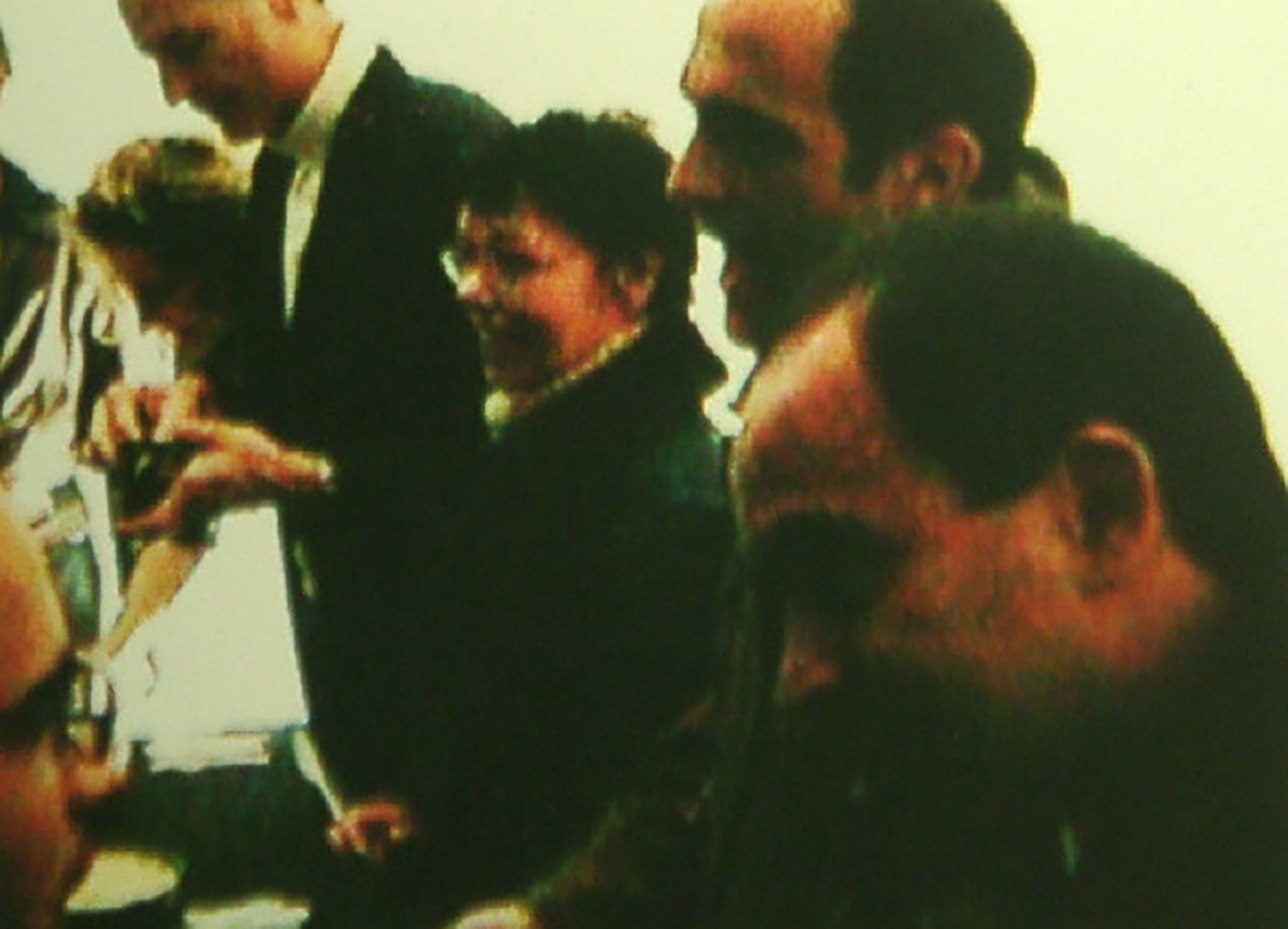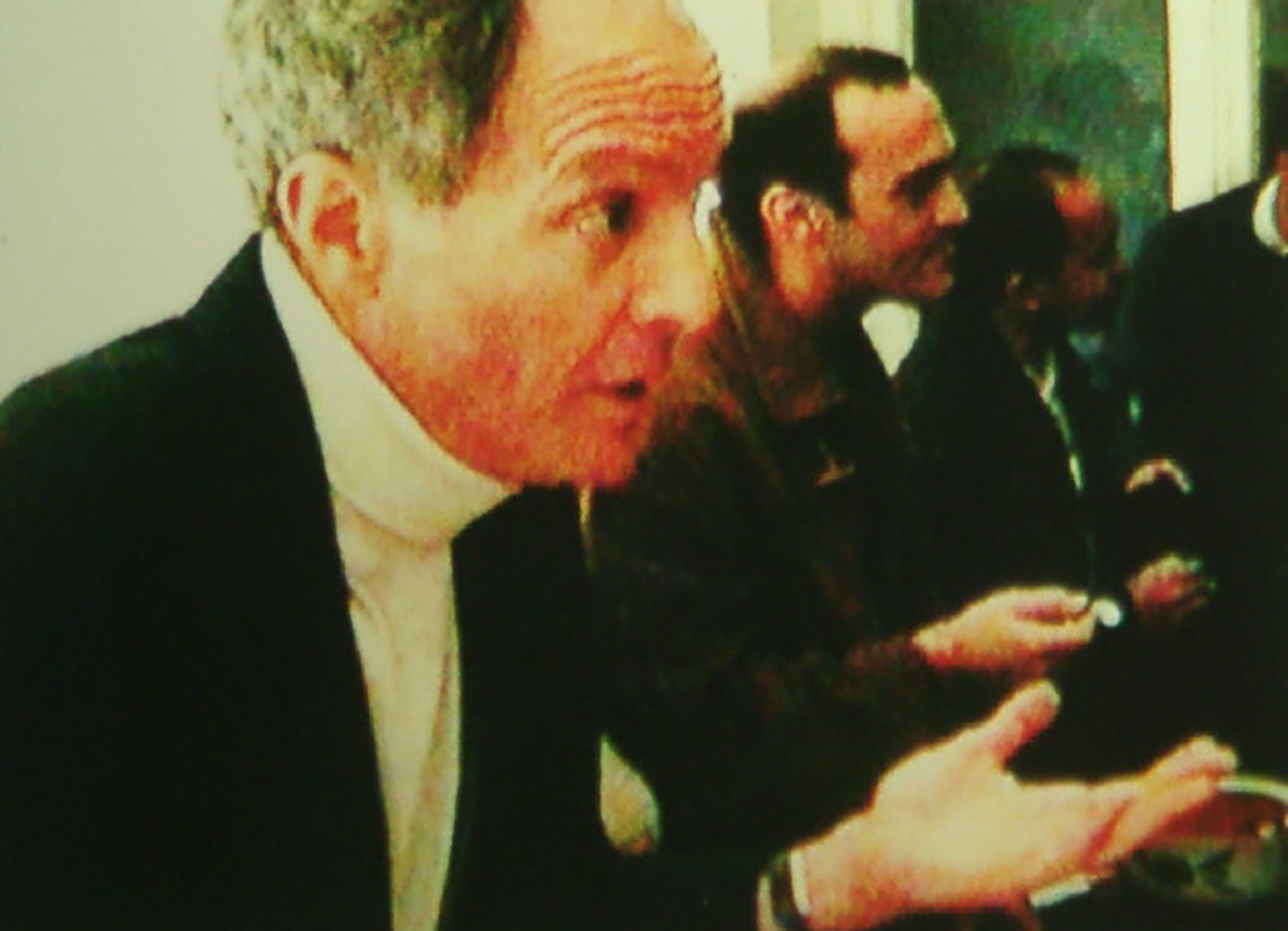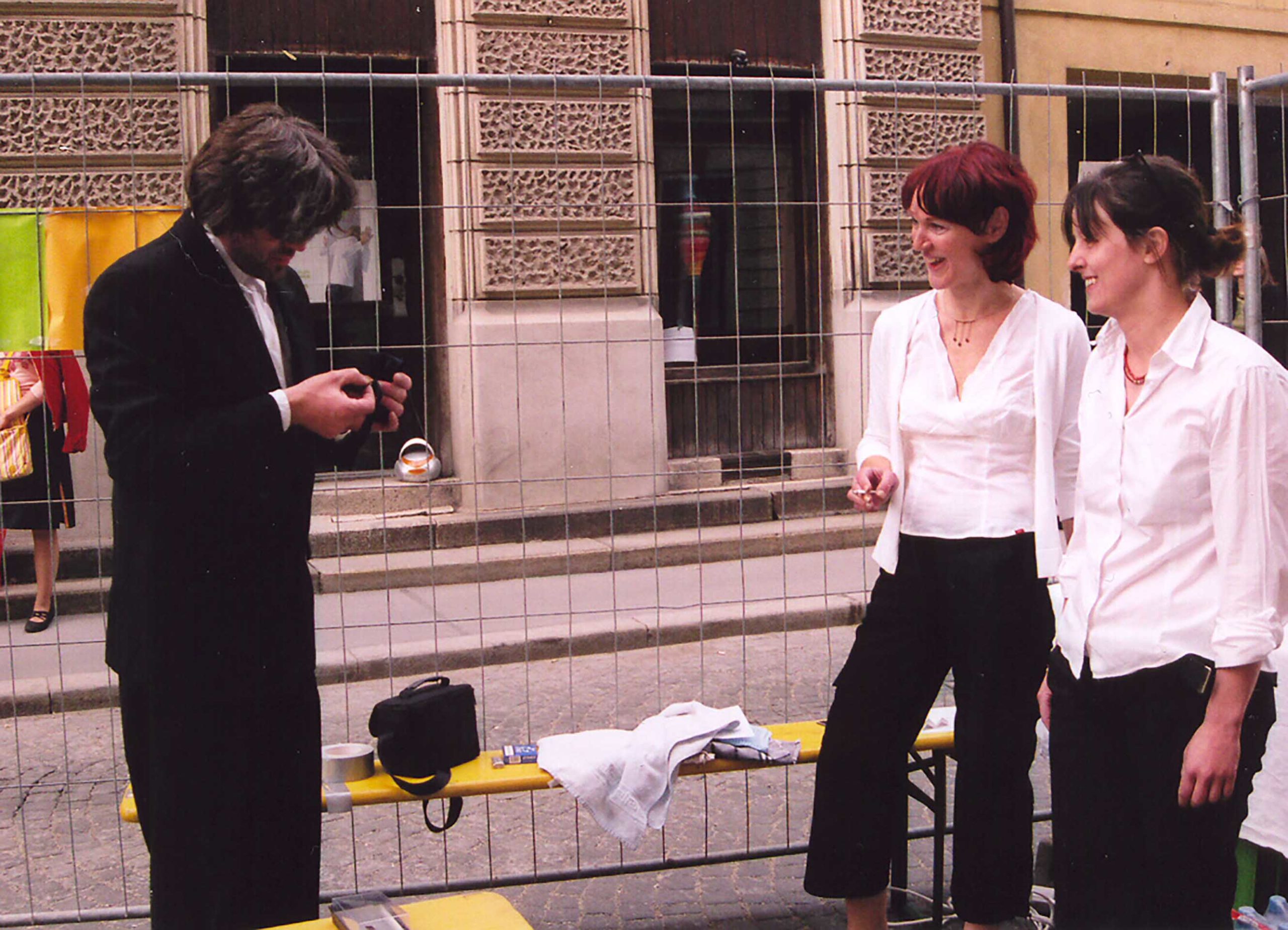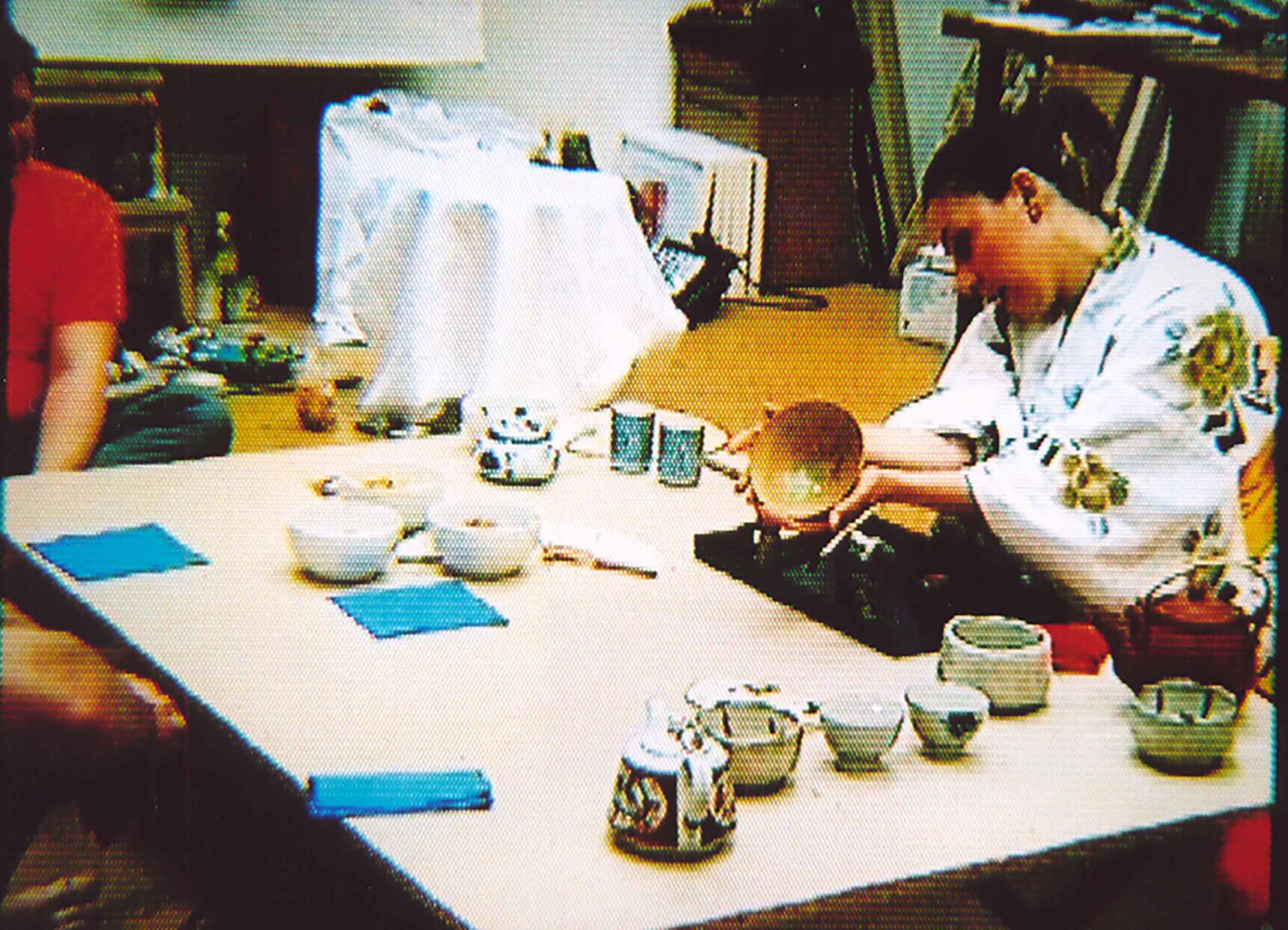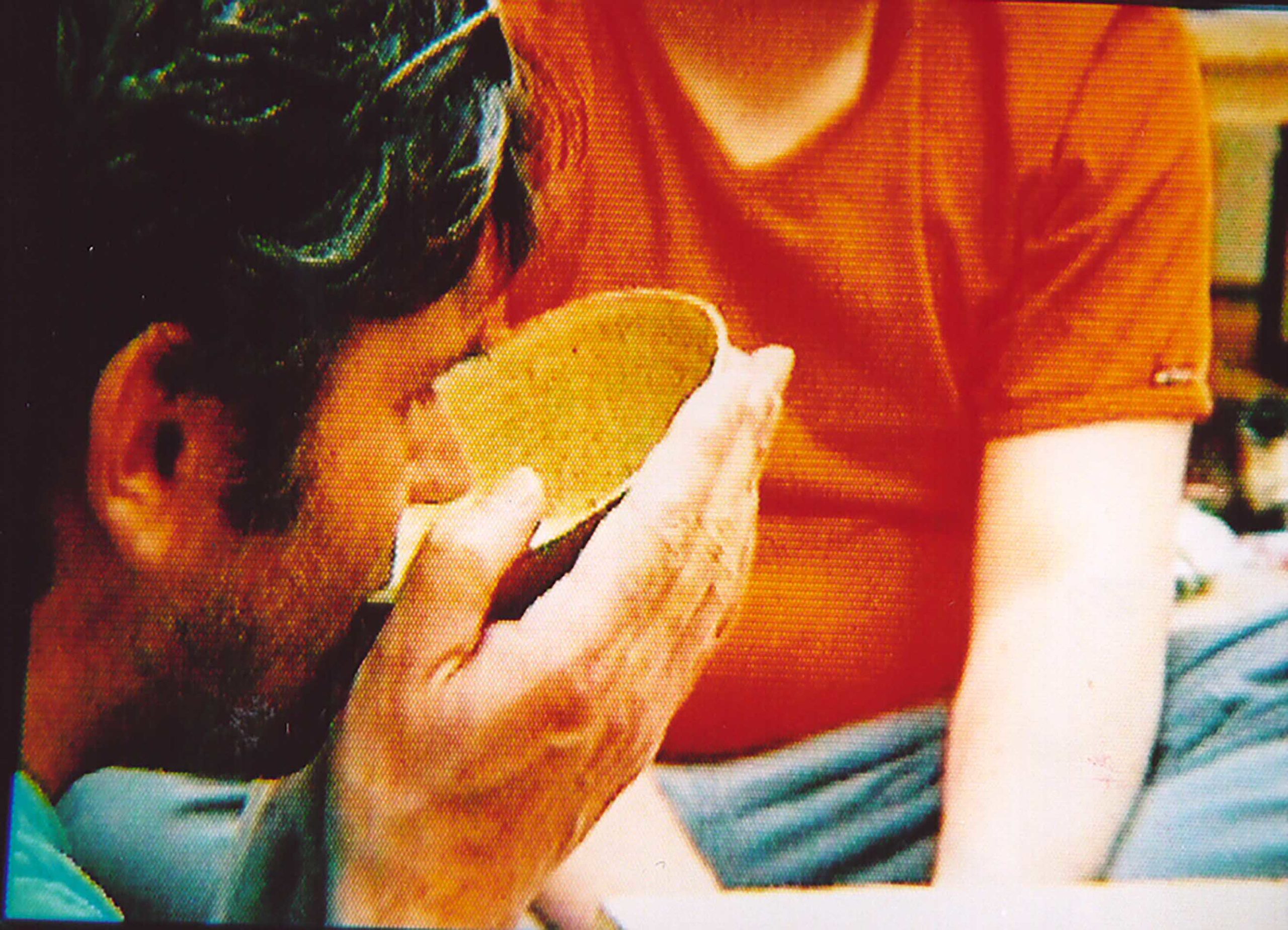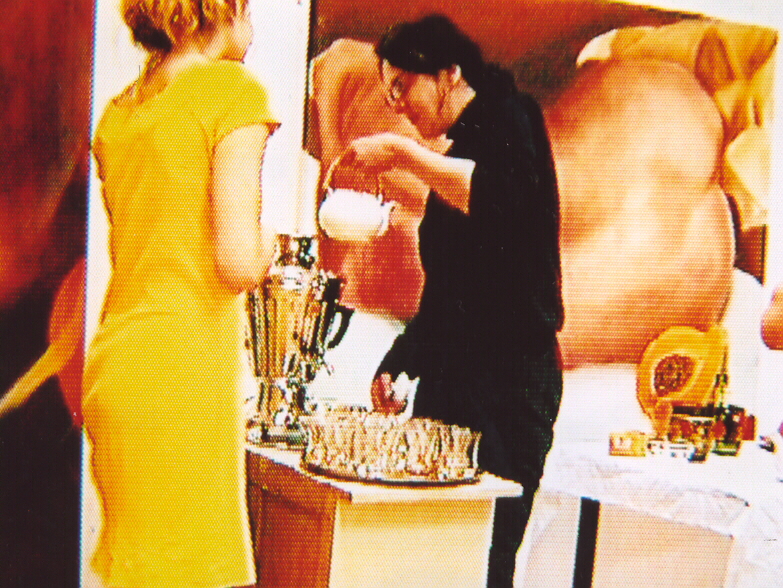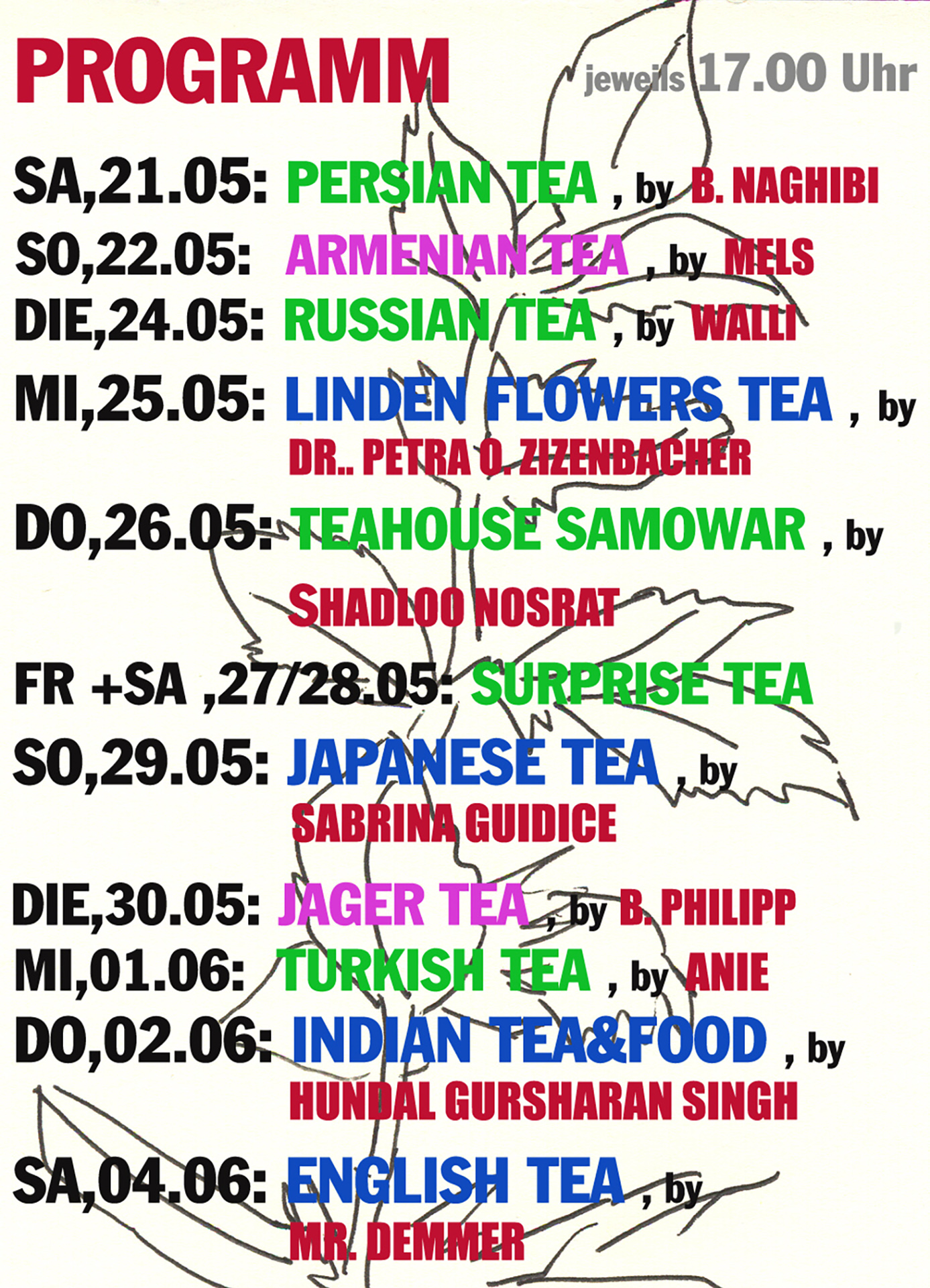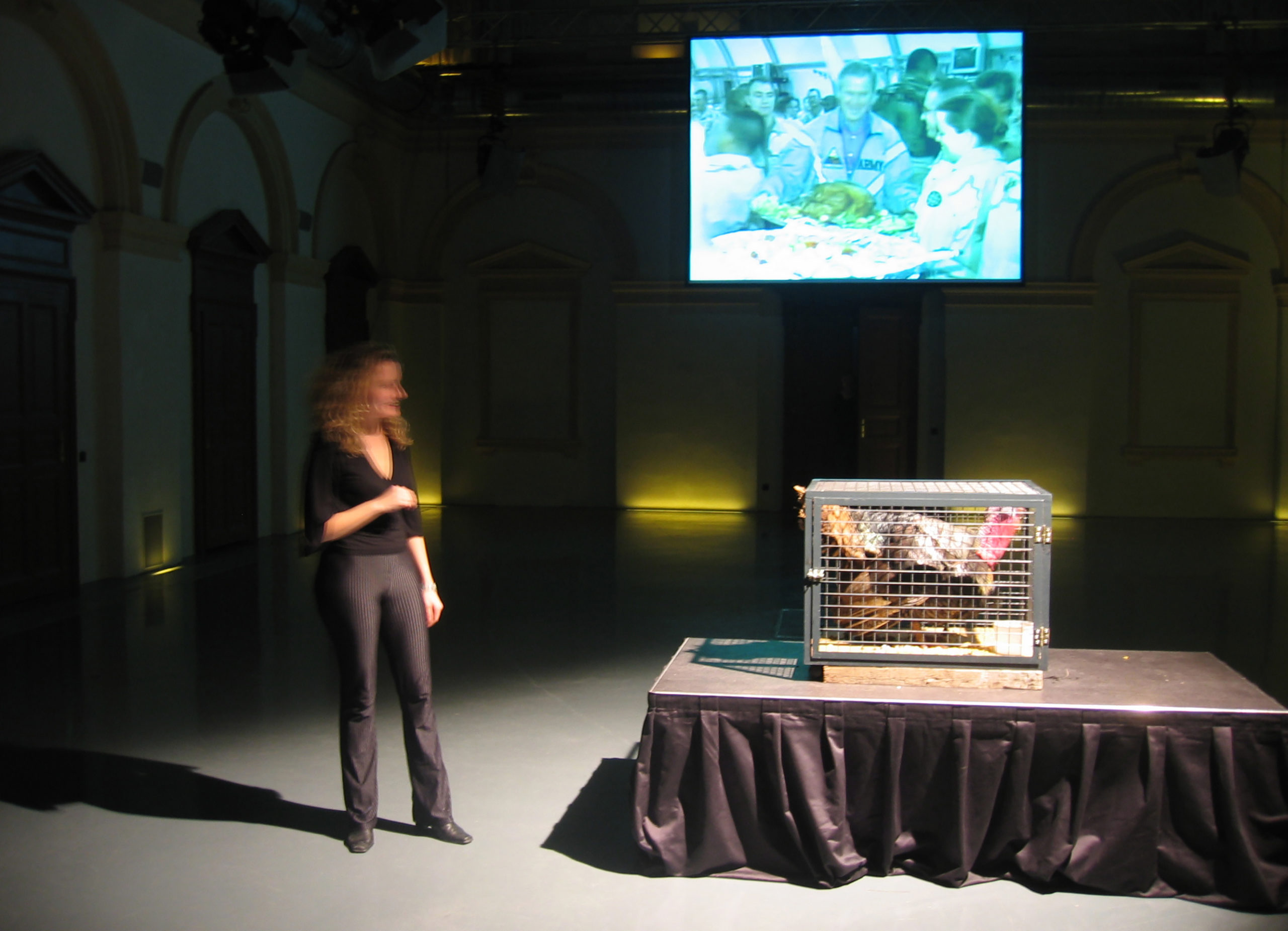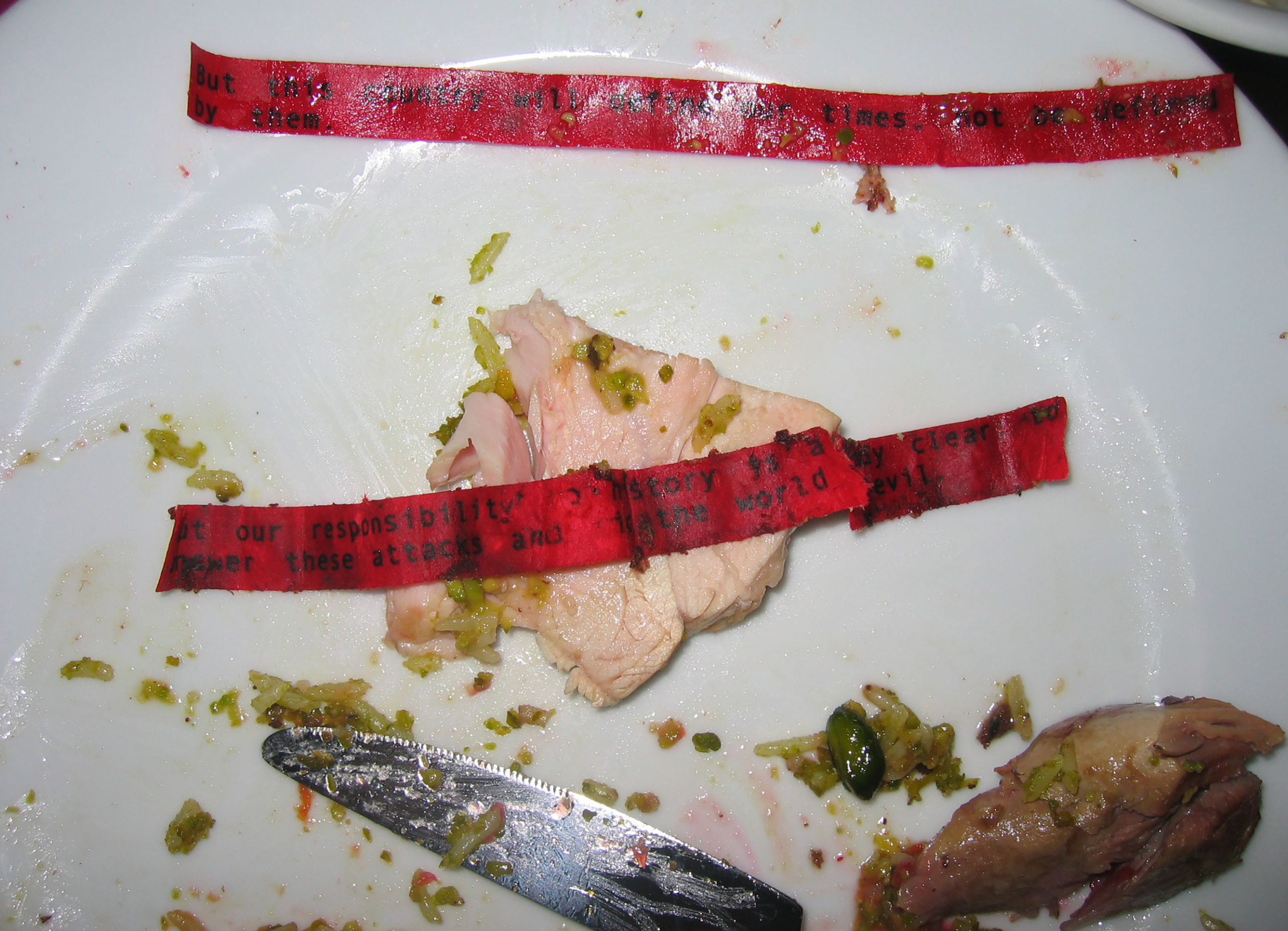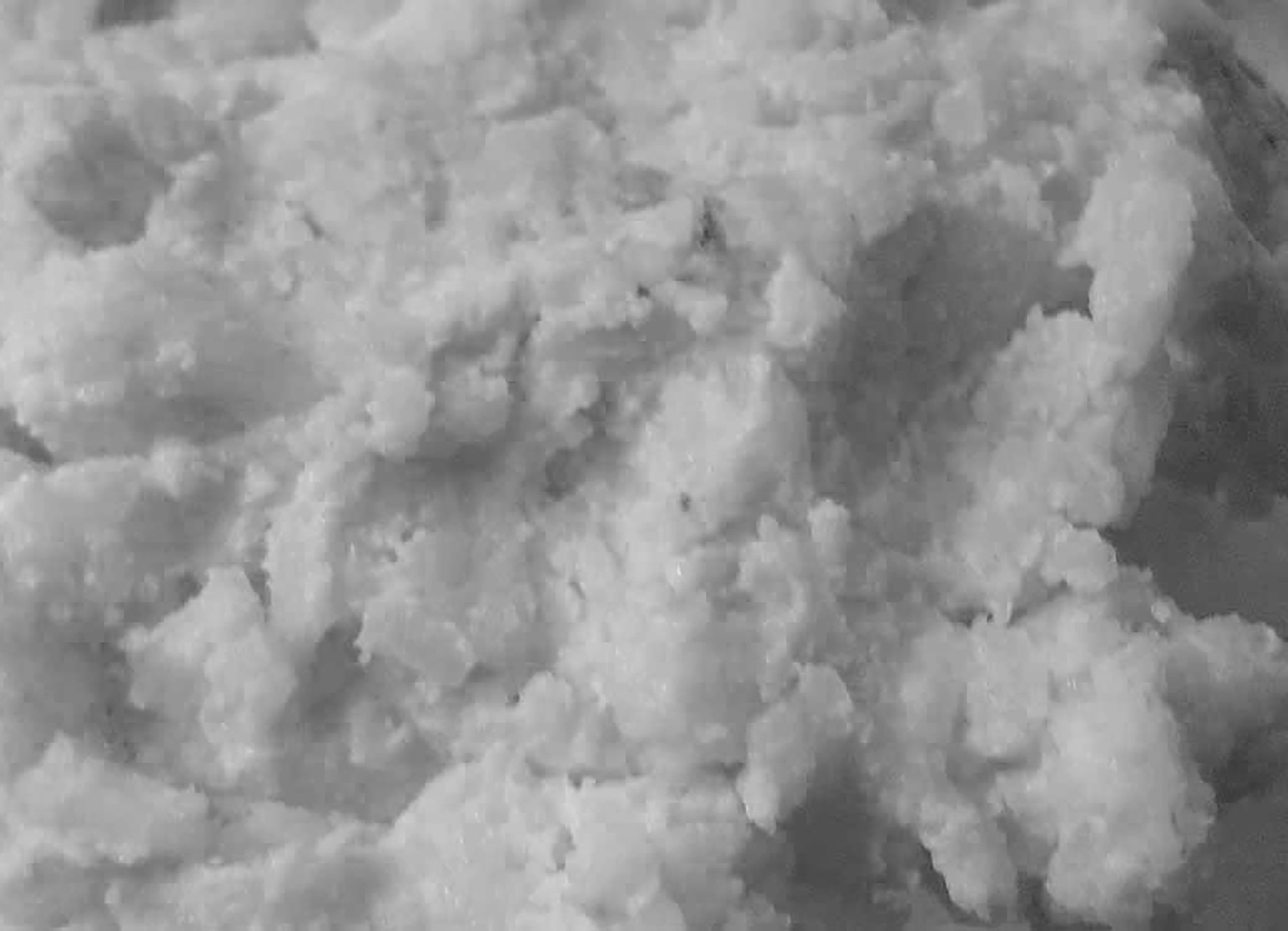Food Performances
Spoonfeeding No. 2
Performance, Yerevan
After a ten-day interrogation time of Armenians and foreigners whom they consider as considered as representative of the actual Armenian society, I decided to invite a businesswoman, a veteran of Karabagh, a journalist, a politician, a priest and a mini bus driver to be the protagonists of the performance. Being influential persons, they are already perceived as spoonfeeders, who nourish the public with their ideas and their opinions. Nevertheless in this situation they also had to feed the public by a real spoon with real food. The feeders themselves could choose the food they had to serve by the spoon. Most of the participants in public were aware of the profession each feeder had. The intimate act of feeding an unknown person provoked strong reactions. This emotional part was the first step towards conversations, which lasted even longer than the performance itself.
The documentation of the performance was partly made by drawings.
Spoonfeeding No.1
Performance, Paris
In an empty room, five different bowls containing various
dishes were placed on a table. Five persons having five different professions, all significant for their ability to influence or to communicate with society, were standing behind the table, in front of the visitors. Using small spoons, they started feeding the audience. Everyone could taste a spoonful of each dish, without knowing whether they were being fed by a priest, a journalist, a prostitute, a politician, or an artist.
Visitors had to choose by whom they wanted to be fed and could let themselves be guided by the appearance of the feeders or by the aspect/taste of the food. The act of feeding was performed in public, while those who fed and those who were being fed at the beginning did not have any kind of relation. They had never met before, they knew nothing about each other, and yet, the person being fed had to trust the feeder.
Pigeonry
Performance during the festival “Soho in Ottakring”, Vienna.
Duration: 3 hours
In collaboration with M. Wildmannʼs and I. Prielerʼs architecture office, Rosi Lebzeltern, Bahar Naghibi and Birgit Beermann, a construction fence was erected to create a protected space. This was subsequently transformed into an open-air restaurant, called Pigeonry (in German Taubenkobel, which also refers to the name of a very famous and expensive restaurant in Austria).
A doorkeeper admits persons who are on the fictive guest list. Then, sitting around the table in a highly elite ambience, guests can discuss the delicate pigeon meat in the proposed dishes and contemplate solutions to the problem of overpopulation in modern cities.
The table functions as a ʻhuman connectorʼ of an ever-changing group. The display of prosperity and wealth is in sharp, visual conflict with the constructed cage and the decaying buildings in the area. A transparent game between ʻinclusion and exclusionʼ seems to take place in the public space. The Taubenkobel/pigeonry project also hints at the transformation of a popular area into a fancy artistsʼ district, with the obvious consequence of rising prices. In the Middle Ages the pigeon was a prized delicacy. Today it is no longer appreciated in the same way. In urban spaces pigeons are viewed as being unclean and a nuisance, provoking reactions of disgust. The initiative to prepare a handbook of pigeon-hunting in the city and to cook the birds afterwards was a resounding success.
Tea Time
Project
in collaboration with SOHO IN OTTAKRING
The project Tea Time offered every day, during the Soho Ottakring festival (21.5.05 – 04.06.05), at 5 o‘ clock a place to sit together, to drink tea and to get to know people coming from different cultural backgrounds. Every afternoon an invited person prepared tea and performed one particular kind of tea ritual. It took place in my studio, which was opened to everybody. The special preparation of each tea, which was brought from all over the world (green tea from Japan, hand-picked herb-tea from the turkish mountains, black tea from India, etc.), created a dialogue between the performers and the visitors. Discussions about cultural uses and mentalities brought about wider perspectives not only on the differences, but also on the similarities of our societies. The meetings at 5 o‘ clock intended to create a place of interaction and communication for the participants. The space was used as an artist studio during the day, but the persons invited to prepare the tea could make changes in the room according to their needs and preferences.
Thanksgiving
Performance at the former slaughterhouse of Vienna
The main issue of this performance was the use of religious vocabulary by the current administration in democratic America. Public statements made by President Bush were printed on paper and then inserted into a stuffed roasted turkey. Through the act of eating the meat unaware of how it was prepared, people either assimilated the hidden messages or discovered with astonishment words on their lips which were not their own.
The president of the United States is required to ‚amnesty‘ one turkey every year on Thanksgiving day. The symbolic liberation of a living turkey in the former slaughterhouse of Vienna was the highlight of this performance. The spectators seemed much more concerned with possible abuse of the turkey than with a video being shown simultaneously behind the cage of Guantanamo prisoners and their fate on the Cuban island.’Sweet‘ suggestions were given in the form of a bible cake, which also enticed the non-religious public.
Thanksgiving is one of the most important holidays in the United States. Families unite all over the country to celebrate. The origin of Thanksgiving has a shady side in history. The consequence of a shared meal between the settlers and the native Indians would eventually be their massacre by the English settlers in the name of God because of the Indians‘ godlessness and in order to conquer the Indians‘ territories for themselves and their descendants. These parallels in history converge to become the crucial point of reflection about Thanksgiving, past and present, in the performance. The shared meal fed the belief in the ‚good‘ and paralyzed critical voices which rebelled against the crusade against the axis of evil. Faith was used as a political shield in order to permit a war against the „bad“.
Cocania : Strageties to survive
Performance, Minoriten Gallery, Graz, April 2006
According to the myth, there is a land where rivers of milk flow along beaches pebbled with cheese, where the finest clothes and accessories grow on bushes and where roasted turkeys fly directly into the mouths of the hungry. This land is called Cocania, the land of plenty.
Today, in times of growing economic instability and crisis, there is a growing interest in the legend of Cocania evident in Europe and the rest of the Western World. The place appears as a profane paradise, detached from religious meaning and morality, but yet an ideal place to live comfortably in everlasting abundance. Abundance is the opposite of lacking and longing, the opposite of a great number of people’s everyday existence.
Diminishing resources world-wide and ebbing wealth in Europe turn Cocania into an illusionary state, an abstract idea belonging to times of mythical perfection – the Golden Age, El Dorado, comes immediately to mind. Austria itself can be seen as Cocania, seen from the outside with the eyes of those longing to live there.
And yet, Cocania, to some, could become a nightmare of boredom and vanity. What hope remains if one already possesses everything from the very beginning? What is the use of making the slightest effort if everything can be attained effortlessly? In Cocanian terms, why work when sleeping earns you decent money?
If the very notion of culture is based on the continuous struggle for intellectual achievement that can only be introduced by changing ideas and challenging viewpoints, the desire to improve and to alter present situations, the abundance and saturation of Cocania could result in an intellectual and material standstill. Passivity, one might argue, is the ultimate state of dehumanization. In Cocania, the mind’s critical faculty regresses in light of unique physical conditions: human beings are reduced to basic urges such as eating, drinking, sleeping and getting dressed. This might be true for those who have known a certain state of abundance, as have all Europeans in the eyes of the world, particularly of the third world.
But how about those who are not familiar with or cannot afford those densely packed products on our supermarket shelves which suggest immediate satisfaction of our needs? What might Cocania be for somebody who has experienced lacking and longing?
The project “Cocania – land for many, land of plenty” investigates different ideas of abundance, of places and states to which one might want to aspire. Visitors to the Open University are surrounded by sound in an empty room. The sound, without any visual element, allows one’s imagination to wander and to reflect about an abstract place such as Cocania. One of the walls around the installation is transformed into the “Cocania frontier”. As in the myth, an enormous wall of rice milk marks the entry to the legendary land of plenty. Visitors, equipped with spoons, eat their way through to the ideal place.
